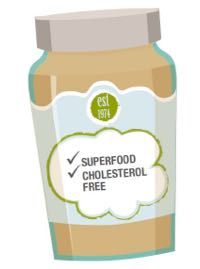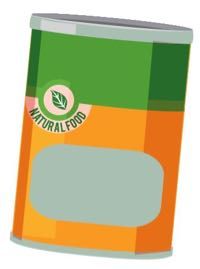Marketing tricks to watch out for
Food manufacturers know that consumers want to eat better, and use a range of marketing techniques to make foods look and sound healthier than they actually are.
We call this ‘health washing’ – dressing up a product as healthier than it really is to mislead consumers and convince them to buy these unhealthy foods.
Here are some tricks to look out for.

1. Buzzwords
Take a peek at any supermarket shelf and you’ll see a dizzying array of products making health claims like ‘natural’, ‘organic’, ‘lite/light’, ‘clean’, ‘fresh’, ‘wholesome’, ‘superfood’, ‘baked not fried’ or ‘sweetened with fruit’. These claims can make a product sound healthy but are usually meaningless.
A previous LiveLighter investigation of supermarket foods that claim to be natural found that almost half were classified as unhealthy foods. When looking at just foods in the snack food aisle, an appalling 90% of those that claimed to be natural were in fact unhealthy.
Although we may feel that these types of claims don’t have any effect on our purchasing habits, research shows that the use of health buzzwords on a food package gives the food a ‘health halo’ that makes us see the product as healthier, even if it isn’t healthy at all. For example, a fruit bar may sound healthy as it claims to be ‘lunchbox friendly’, contain ‘superfoods’ and have ‘no artificial stuff’ even though it is 50% sugar!

2. Package trickery
Brown paper packaging, green leaves, muted colours, nature landscapes, images of fruits and vegetables, minimalist designs and earthy fonts can make us think a food is less processed than it really is. These strategies are used to subtly evoke the perception that a food is healthy without the manufacturer having to actually make this claim (or back it up).
3. Free from…
Have you noticed that every second food product these days seems to be making a claim to be ‘gluten-free’, ‘fat-free’, ‘refined sugar-free’ or ‘cholesterol-free’? ‘Free from’ claims can be used to hide less palatable facts about the product. For example, lollies may make a claim that they are 99% fat-free although they are almost 100% sugar! Crackers may be marketed as gluten-free but can still be highly processed and packed with saturated fat and salt.
Labelling claims often focus on the positive elements of the product but don’t tell the full story about what’s in the food.
Tip There are less tricky advertising or claims to interpret on the healthy foods we should fill up on! Fruit and vegies, lean meat, eggs, legumes, seafood and plain dairy don’t usually have complicated packaging.
Vegie chips are often marketed as a healthier alternative to regular chips. But are they really? Find out here.